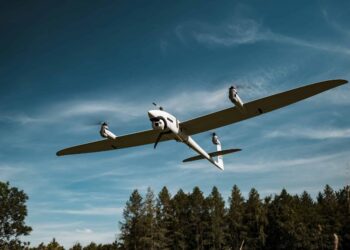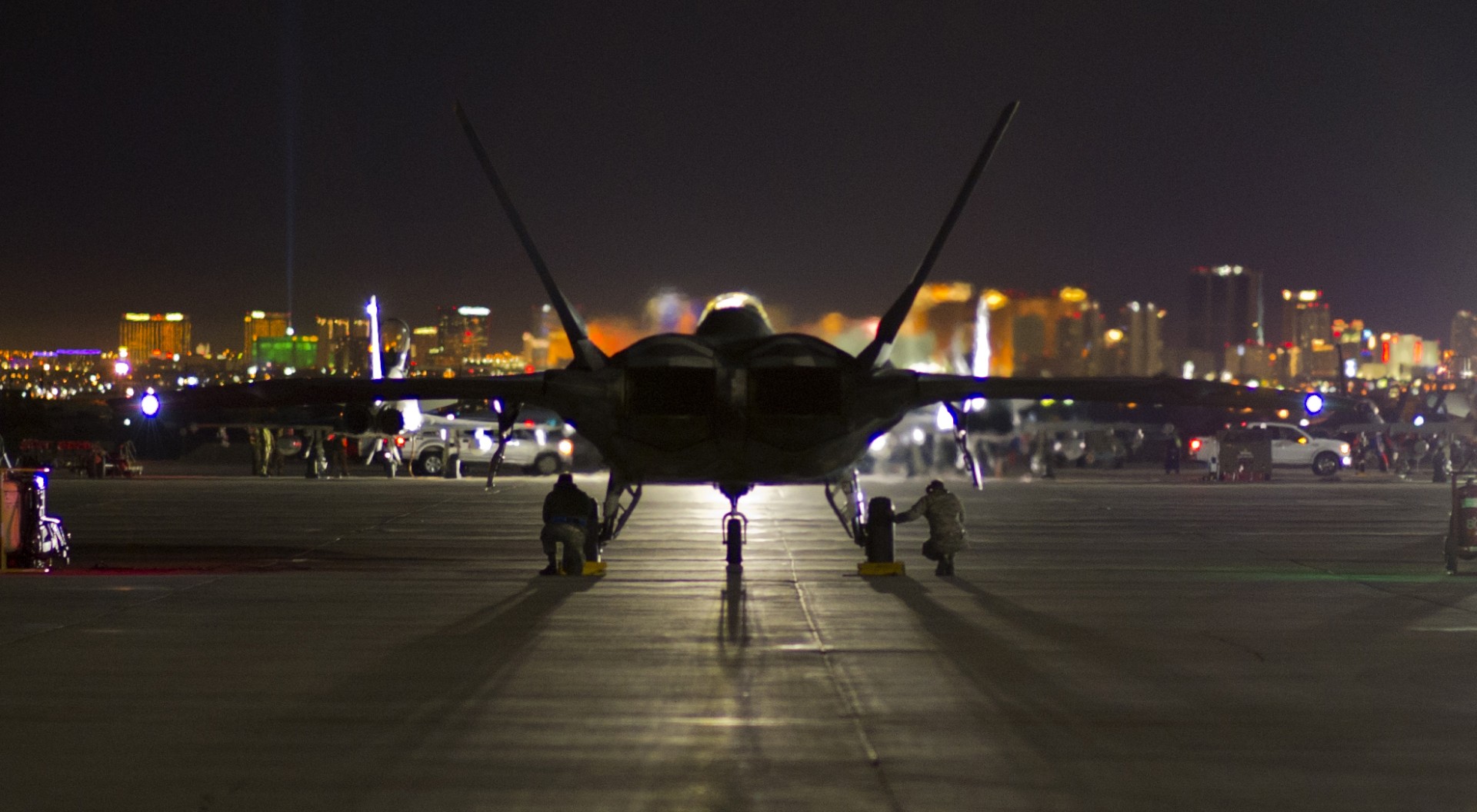US Air Force, SOUTHWEST ASIA: Global Hawk and U-2 aircraft provide critical intelligence, surveillance and reconnaissance, and in order to be efficient and effective the technological sensors on these aircraft cannot be subjected to heat for extended periods of time.
Due to the compact size of the Global Hawk and the freezing temperatures at its normal operating altitudes, the aircraft does not have a robust environmental control unit to keep the numerous electronic systems cool in very warm temperatures.
“That is why the hangar the aircraft are kept in has air conditioning and we perform almost all of our launches and recoveries at night when it is “slightly” cooler,” said 2nd Lt. David Bates, 380th Expeditionary Aircraft Maintenance Squadron, referring to the Global Hawk.
The tolerance for hot temperatures for the main operating computer on the Global Hawk is 105 degrees Fahrenheit. This was a major factor recently when one of the aircraft was returning to base with an in-flight discrepancy, according to Lieutenant Bates.
| Click to Enlarge |
“We were unable to launch the spare aircraft due to difficulties with the communications hub on the aircraft and subsequent faults,” said the lieutenant.
After the first shut down on the Global Hawk, the team was in the process of devising a system that would allow them to be able to launch the aircraft in mid-day heat. Then an opportunity presented itself.
After troubleshooting the aircraft for hours in the midday heat, 380th EAMXS Airmen were concerned about the aircraft compartment temperatures. The call was made to press with the launch and the aircraft was able to taxi onto the runway and begin to take off.
“Only seconds later the aircraft autonomously stopped the takeoff roll due to an over temperature indication,” Lieutenant Bates said. He said that if the aircraft's onboard fuel, used to cool the sensor systems, got too hot during operation, the system was designed to halt operations in an effort to save its expensive components.
“It was just very unfortunate timing that it stopped right after it started to take off because as soon as it gained some altitude it would have cooled quickly,” he said.
Shortly after the event, the team members found themselves in a “nightmarish” repeat of what happened days earlier. Another one of their aircraft was returning to the base and they had to turn another aircraft to get the mission complete in the middle of the day.
“This time we were already working on the aircraft to troubleshoot some issues; we only have three jets and were flying every day, so maintenance had to use whatever time they could and so it had been already outside for some time,” said Lieutenant Bates.
Due to the winds that day, they also had to tow the aircraft to the opposite end of the runway, about a 45-minute and two-mile tow on the ramp that, at the time, was about 145 degrees Fahrenheit.
“The time required to tow plus the time it would take to prepare and launch the jet would almost certainly send the temperatures of our compartments through the roof,” Lieutenant Bates said.
Senior Master Sgt. Kevin Brogan, 380th Expeditionary Aircraft Maintenance Squadron, suggested getting a water truck from the fire department and hosing down the aircraft wings where the fuel that cools our components is stored.
“The fire department's responsiveness was impressive and they were quite eager to assist,” said Lieutenant Bates.
Capt. Fernando Colon, 380th EAMXS, took another initiative and got a pressure washer so they could cool the aircraft wings while towing.
Once on the spot, they were quick to pre-flight and get the aircraft in the air; from engine start to take off was about 18 minutes.
“Operators indicated that the internal component temperatures were cooler then some of the launches we do at night. The aircraft launched and completed a successful mission,” Lieutenant Bates said.
For the U-2 aircraft, the purpose is to develop the most efficient aircraft and sensor cooling process possible and minimize the amount of time aircraft and sensors are exposed to heat as well.
The maintainers' greatest challenge is keeping the aircraft and sensors cool until the aircraft gets airborne.
“In order to do this, we have orchestrated a “NASCAR” pit crew style launch,” said Capt. Randal Hoewt, 380th EAMXS. The team has 10 people involved with the launch process; each person has a choreographed job that must be done in conjunction with the other members to ensure the launch goes smoothly.
“Another challenge we face is keeping the aerospace ground equipment from overheating,” said the captain. “After experimenting with different configurations of equipment we found the optimal set up that ensures max cooling air and prevents the equipment from overheating.”
One solution to this problem that squadron Airmen suggested was to include work with the AGE flight maintainers to inspect the AGE equipment and replace all worn hoses, gaskets and seals.
According to Captain Hoewt, they also determined optimum AGE positioning for aircraft launch by marking all positions, creating an AGE template around the aircraft so there would be the same set-up for every launch.
They eliminated the cooling cart, power cart and air cart repositioning by developing an AGE driver drop box. They eliminated unnecessary cooling hoses by positioning the equipment safely as close to aircraft as possible, resulting in maximum airflow volume with minimal cold air dissipation.
While the maintainers are minimizing the amount of time the aircraft and sensors are exposed to the heat, they ensure sensor nose covers are installed at all times and cooling air is applied a minimum of three hours prior to flight and left on aircraft until the last possible second.
“We minimize the time the aircraft and sensors are exposed to the heat on recovery as well,” said Captain Hoewt. “We will tow the aircraft back into the hangar as soon as we can.”
Squadron maintainers also have created a seven-minute launch sequence mentality across maintenance and operations, according to the captain. By working with the operators, they were able to reduce the pre-launch time from approximately 25 minutes down to seven. This has paid huge dividends in sensor reliability and also reduced aircrew discomfort.
Cruising at extremely high altitudes, Global Hawks and U-2s survey large geographic areas with pinpoint accuracy to give military decision-makers the most current information about enemy location, resources and personnel.










